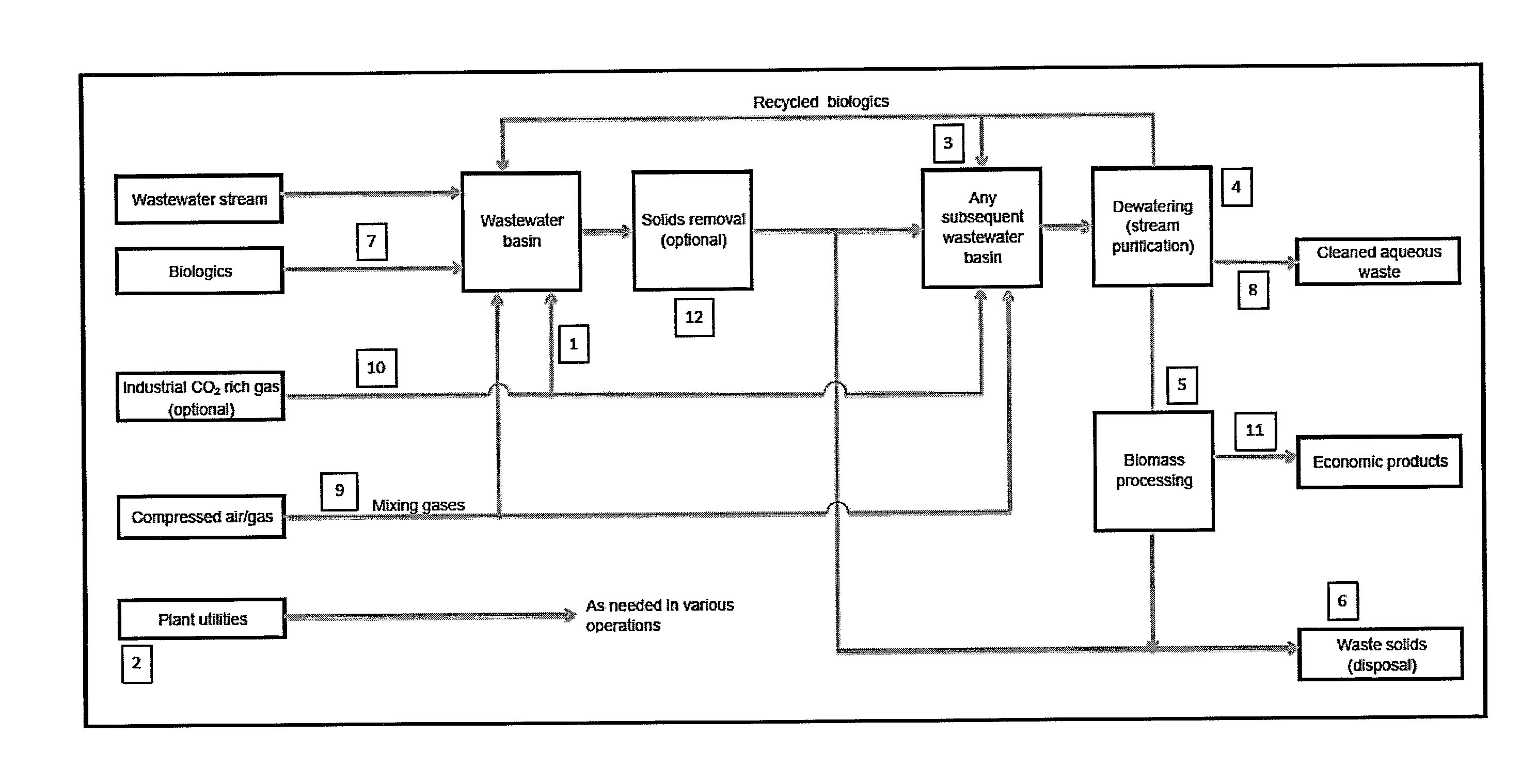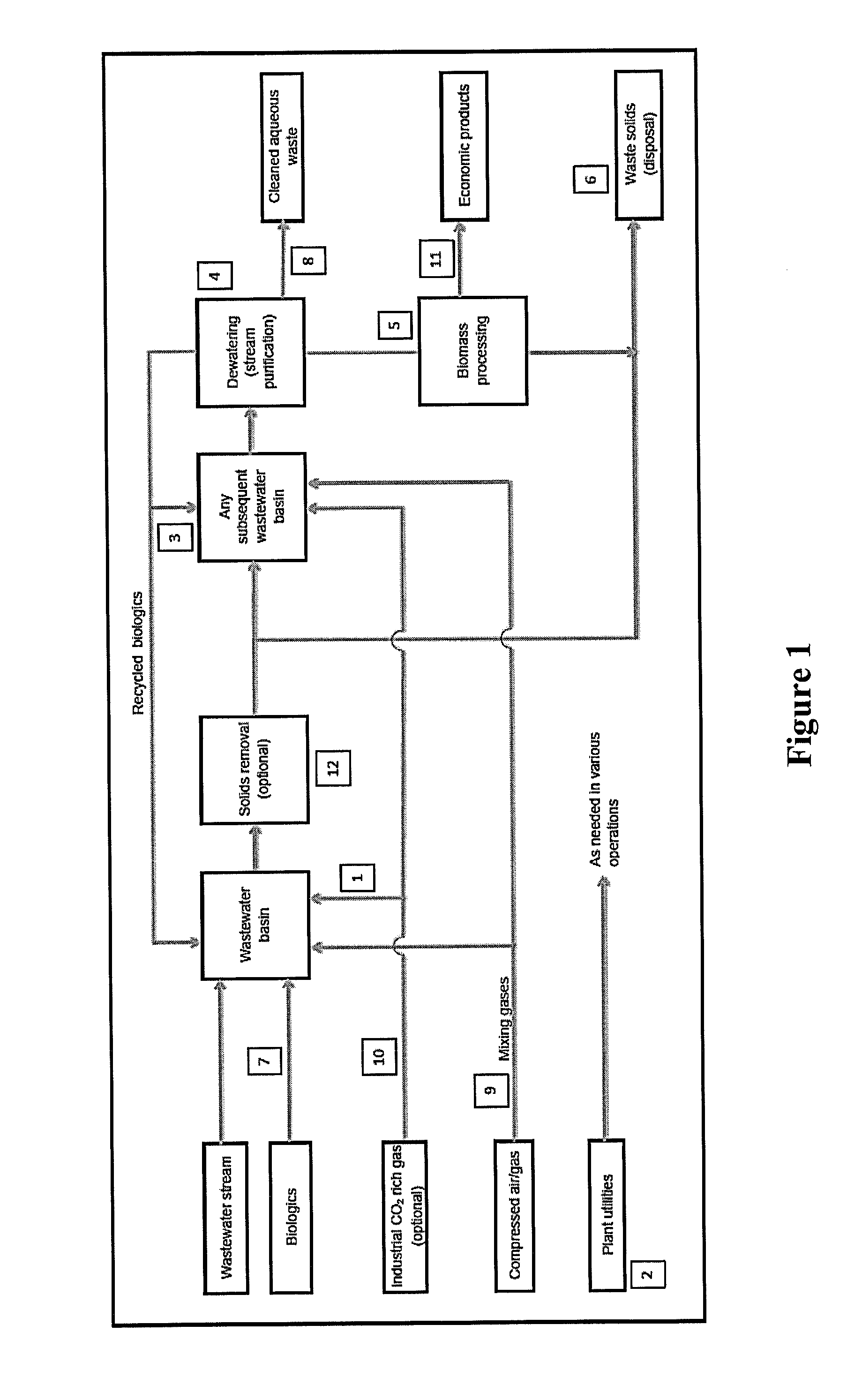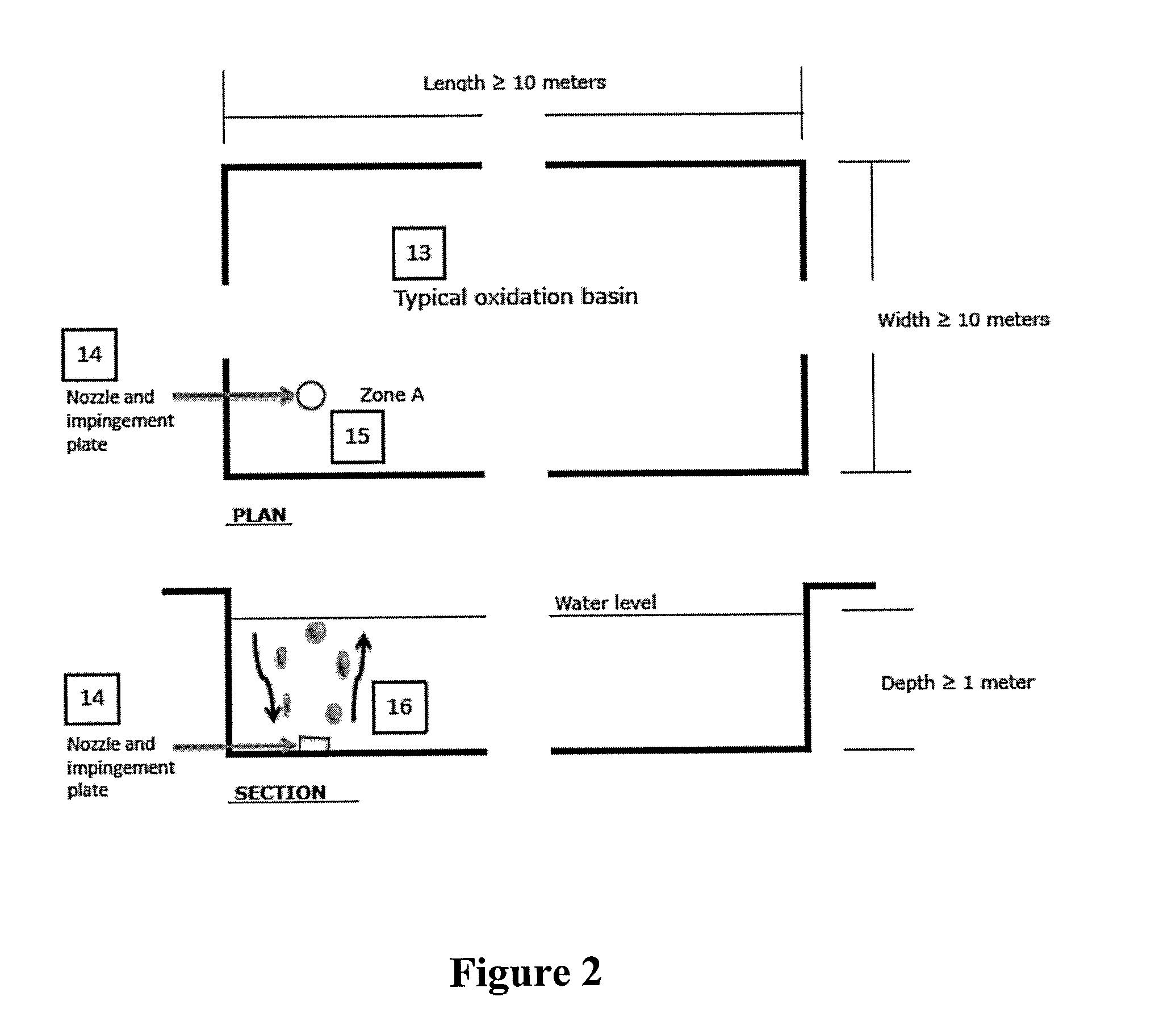Wastewater treatment systems and methods
- Summary
- Abstract
- Description
- Claims
- Application Information
AI Technical Summary
Benefits of technology
Problems solved by technology
Method used
Image
Examples
example 1
Basin Mixing
[0119]Existing oxidation basins typically have a design depth of 1 meter or more. This depth allows extended reaction or stay-time in the volume to accomplish waste material conversion to innocuous products (primarily carbon dioxide and water). Using photosynthetic microbes in the existing oxidation basins provide limited benefits because the conditions favorable to algae growth only occur at a small volume proximate to the basin surface.
[0120]This Example teaches the introduction of mixing to essentially make the entire depth available for microbial growth because of the “bottom-up” circulation for the gas buoyancy. This concept can be used for nearly all basins because of the system's flexibility regarding basin geometric shape and depth. This includes post-oxidation ponds, settling ponds, and intermediate holding pits for flowback or produced water. Mixing can be implemented for example through use of compressed gas.
[0121]Further, this invention applies not only to cu...
example 2
Solids Enrichment: Recycle of Solids
[0127]This Example describes using a dewatering system to recycle viable microbe consortia from the wastewater system without the use of flocculants, which can render the biomass non-viable and are damaging to ecosystems. The dewatering system also recycles non-viable solids that can still perform remediation functions such as adsorption of metals. The microbial solids can be returned to the basin to maintain desired levels of suspended solids. The level of suspended solids can be adjusted for any desired level of nutrient recovery or compositional modification (such as remediation) or for seasonal effects on operation. Dewatering systems useful according to the present invention include, but are not limited to, plate and frame filters, centrifugation, rotary drum vacuum filters, belt filters, hybrid systems, and any combinations thereof. In one embodiment, some continuous centrifugation technologies that enable dewatering of still viable cells ar...
example 3
Microbe Culture Techniques for Enrichment of Viable Solids
[0133]This Example illustrates various microbe culture techniques for producing a preferred or dominant composition of the microbe consortium and / or for enriching viable solids for nutrient recovery. Microorganisms are isolated from water samples taken from the wastewater site or obtained from collections. Basal media vary as is known in the art for Archaea, Proteobacteria, bacteria, cyanobacteria, and numerous eukaryotic microbes on fresh water, saline, or hypersaline media. For example, salt-tolerant archaea can be grown in medium containing NaCl (175 g / L), MgCl2.6H2O (50 g / L), K2SO4 (5 g / L), CaCl2.2H2O (0.1 g / L), yeast extract (Difco) (5 g / L), agar (20 g / L), pH 7.0-7.2. Carbon is added as desired, such as 0.1 to 5% glucose or molasses. In other cases, known media such as Guillard's F / 2, TAP or BG-11 can be used for microalgae.
[0134]In an embodiment, one or more algal lines identified to be of interest are transferred from ...
PUM
| Property | Measurement | Unit |
|---|---|---|
| Temperature | aaaaa | aaaaa |
| Fraction | aaaaa | aaaaa |
| Volumetric flow rate | aaaaa | aaaaa |
Abstract
Description
Claims
Application Information
 Login to View More
Login to View More - R&D
- Intellectual Property
- Life Sciences
- Materials
- Tech Scout
- Unparalleled Data Quality
- Higher Quality Content
- 60% Fewer Hallucinations
Browse by: Latest US Patents, China's latest patents, Technical Efficacy Thesaurus, Application Domain, Technology Topic, Popular Technical Reports.
© 2025 PatSnap. All rights reserved.Legal|Privacy policy|Modern Slavery Act Transparency Statement|Sitemap|About US| Contact US: help@patsnap.com



